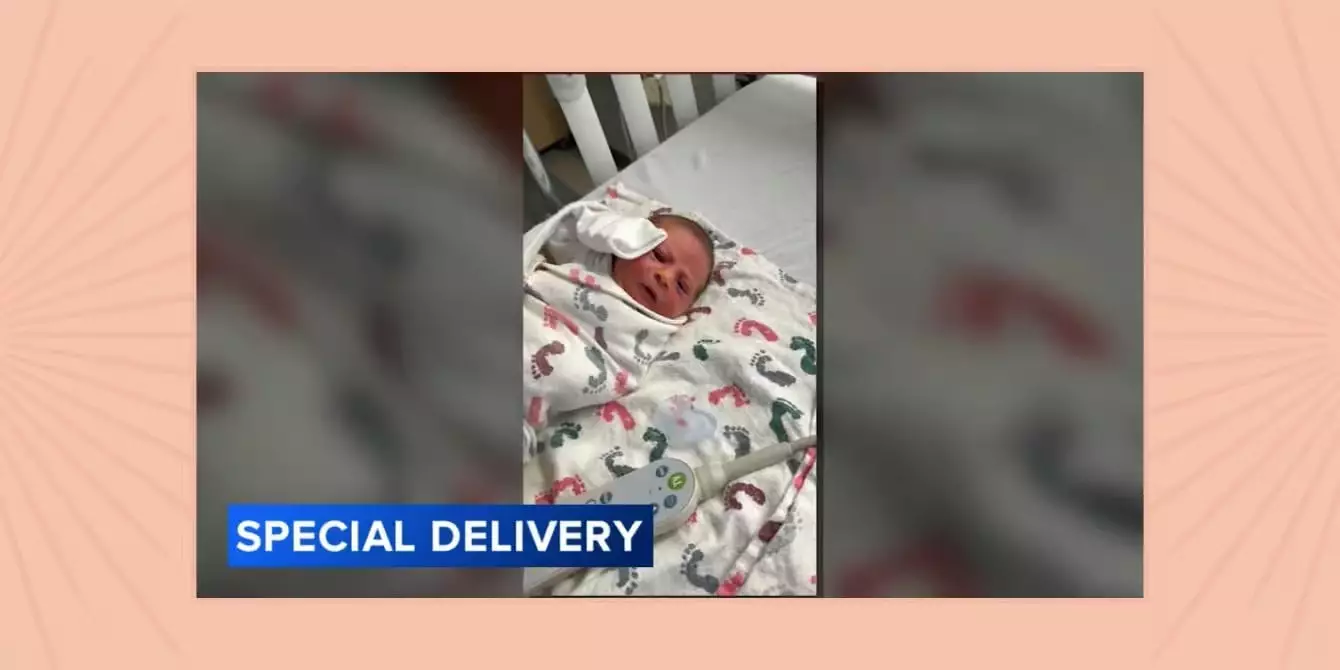Life is a paradoxical journey where profound moments of sorrow often coexist with the brightest flashes of happiness. This intrinsic emotional duality reflects the human condition—our capacity to hold conflicting feelings simultaneously reveals resilience and depth. The story of Elissa Danielle West exemplifies this beautifully: a woman who navigated the tumult of losing her mother and giving birth to her grandson within hours. Rather than succumbing to despair, she found herself embracing the unanticipated miracle that life presented—a testament to the resilience of love in its many forms.
Grief, often perceived as a singular, overwhelming emotion, is more accurately a complex tapestry woven with threads of longing, gratitude, sorrow, and even hope. The remarkable aspect of such stories is how they challenge our linear understanding of loss and healing. Human beings are remarkably adaptable, capable of transforming pain into new beginnings. When Elissa delivered her grandson amid chaos and sadness, she demonstrated a profound truth: life continues, sometimes in unexpected ways, and love persists beyond the boundaries of physical presence.
The emotional richness of such experiences underscores the importance of recognizing grief not solely as a void but as part of a larger spectrum that includes joy and hope. This nuanced understanding allows us to see painful moments as potential catalysts for growth and healing. It also reveals that love’s endurance is not diminished by physical separation or death; instead, it adapts, taking on new forms that carry us forward.
Science Validates Our Deepest Experiences
The human capacity to feel contradictory emotions is not merely a poetic idea but has been substantiated through academic research. Studies indicate that experiencing happiness and sadness concurrently is a natural part of the human psyche. This phenomenon—sometimes called “bittersweet” emotion—serves a practical purpose. It allows individuals to process grief while still engaging with the beauty of new life or hope. Recognizing this duality fosters a compassionate self-awareness vital for navigating life’s complexities.
Research into family dynamics following loss reveals that children born after a traumatic event are often regarded with particular love and significance. These children are perceived as embodiments of hope—a living reminder that life persists amid sorrow. The recognition that grief can deepen familial bonds rather than weaken them is powerful; it reframes loss as a foundation upon which future connections are built. The birth of Noah, amid the grief of losing his great-grandmother, encapsulates this dynamic perfectly. His presence wasn’t just accidental but seemed almost orchestrated by the universe as an affirmation of life’s resilience.
Moreover, scientific studies suggest that periods of intense grief can influence decisions around family planning. Some individuals, driven by an instinctual desire for continuity, seek to create new life as a way to honor the past and secure hope for the future. This instinctual push toward new beginnings after tragedy illustrates how deeply interconnected our emotions and biological drives are. It’s a powerful reminder that, often, heartbreak can propel us further into hope rather than away from it.
Love’s Transformative Power in the Face of Loss
What makes stories like Elissa’s so compelling is their universal relevance. They illustrate that love is not a static entity confined to one moment or person; it is fluid, always evolving in response to life’s circumstances. When her mother passed away, it would have been easy to fall into despair. Yet, the arrival of Noah gave her family a new reason to smile, to hold on, and to heal.
The emotional significance of Noah’s birth extends beyond the literal event. It symbolizes a form of spiritual continuity—a reminder that love persists in every heartbeat, every shared glance, and every act of connection. Though Elissa’s mother won’t hold her great-grandson in her arms, she is present in the enduring love that binds generations. This intangible presence confirms the idea that love transcends physical boundaries, becoming a legacy that persists beyond the confines of time and mortality.
In recognizing and embracing this truth, families can find solace amid pain. The human capacity to love, memorialize, and carry forward the essence of those we have lost underscores a profound resilience. Love heals wounds, forges new bonds, and introduces hope into even the darkest moments. Noah’s arrival, in this context, was not merely an unexpected event but a powerful affirmation: life will always find a way to surprise us, to remind us that in love, there is ongoing renewal.
Reclaiming Joy Through the Lens of Loss
Ultimately, stories like Elissa’s compel us to reconsider our relationship with grief. They teach us that love’s enduring nature allows us to find moments of joy that are deeply connected to our history, our losses, and our hopes. Resilience isn’t about forgetting pain but about integrating it into our ongoing narrative—about allowing it to serve as a backdrop against which new light can shine.
There is a peculiar beauty in the way life ensures that love’s presence is felt regardless of circumstances. Noah’s birth, occurring so close to the loss of his great-grandmother, challenges traditional notions of timing and coincidence. It invites us to see beyond the superficial, to perceive life’s intricate dance—where pain and joy serve as two sides of the same coin, shaping our existence in ways we can hardly comprehend.
Through this lens, the act of love becomes a revolutionary act—one that defies the finality of death and celebrates the ongoing ability of human beings to find hope amid hardship. As families continue to face grief, stories like Elissa’s remind us that love’s influence isn’t diminished by loss. Instead, it transforms, offering us new ways to heal, to celebrate, and to keep hope alive—even when the road is difficult.

